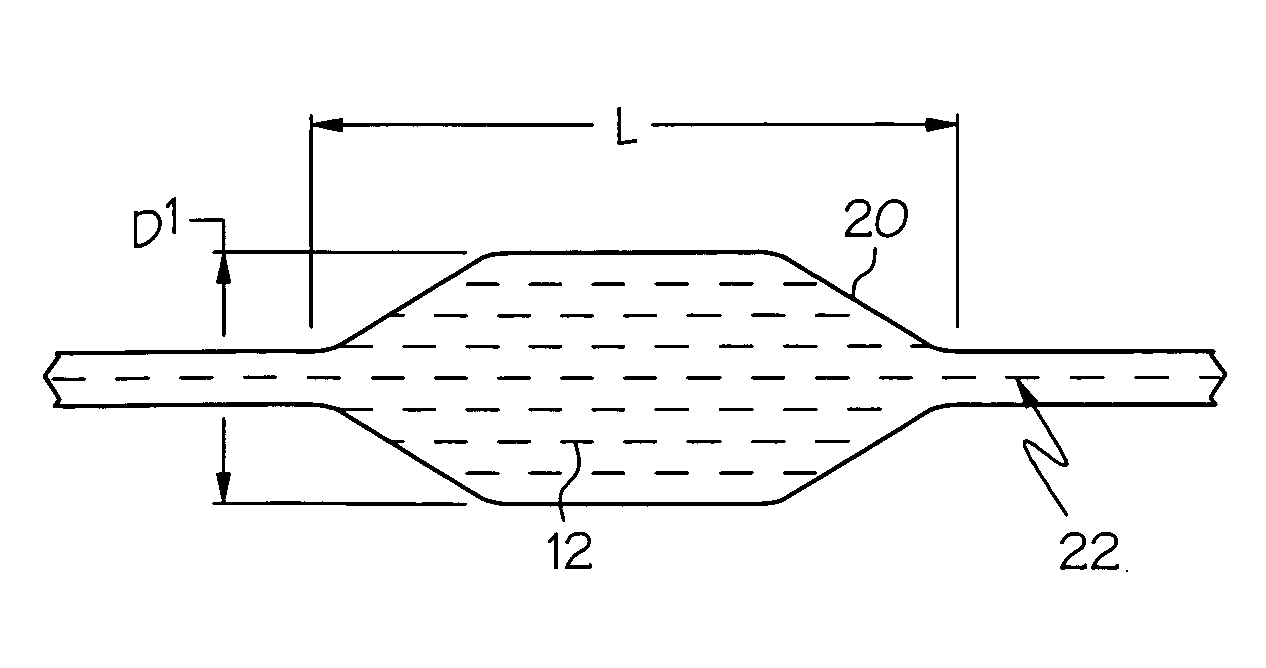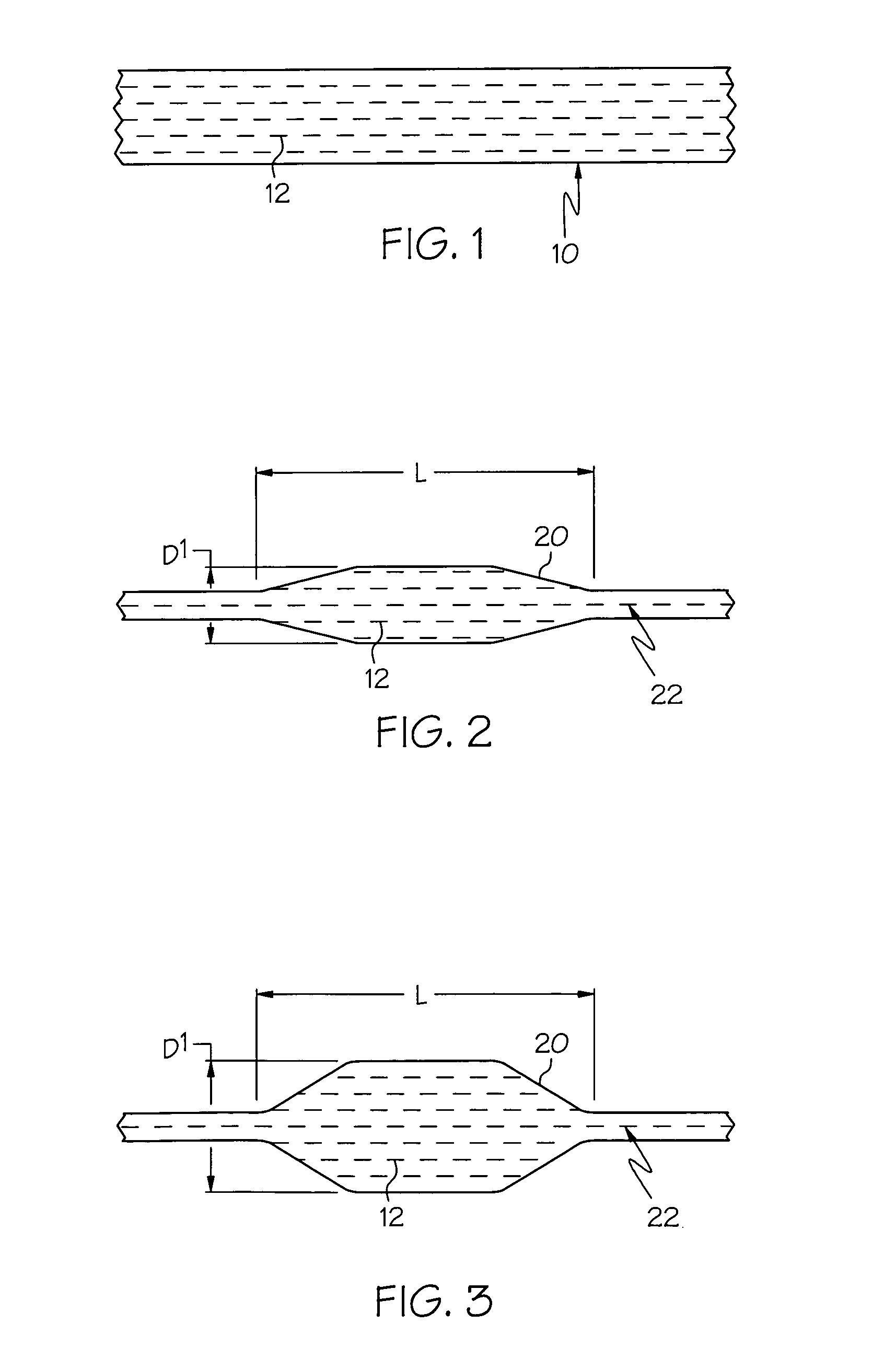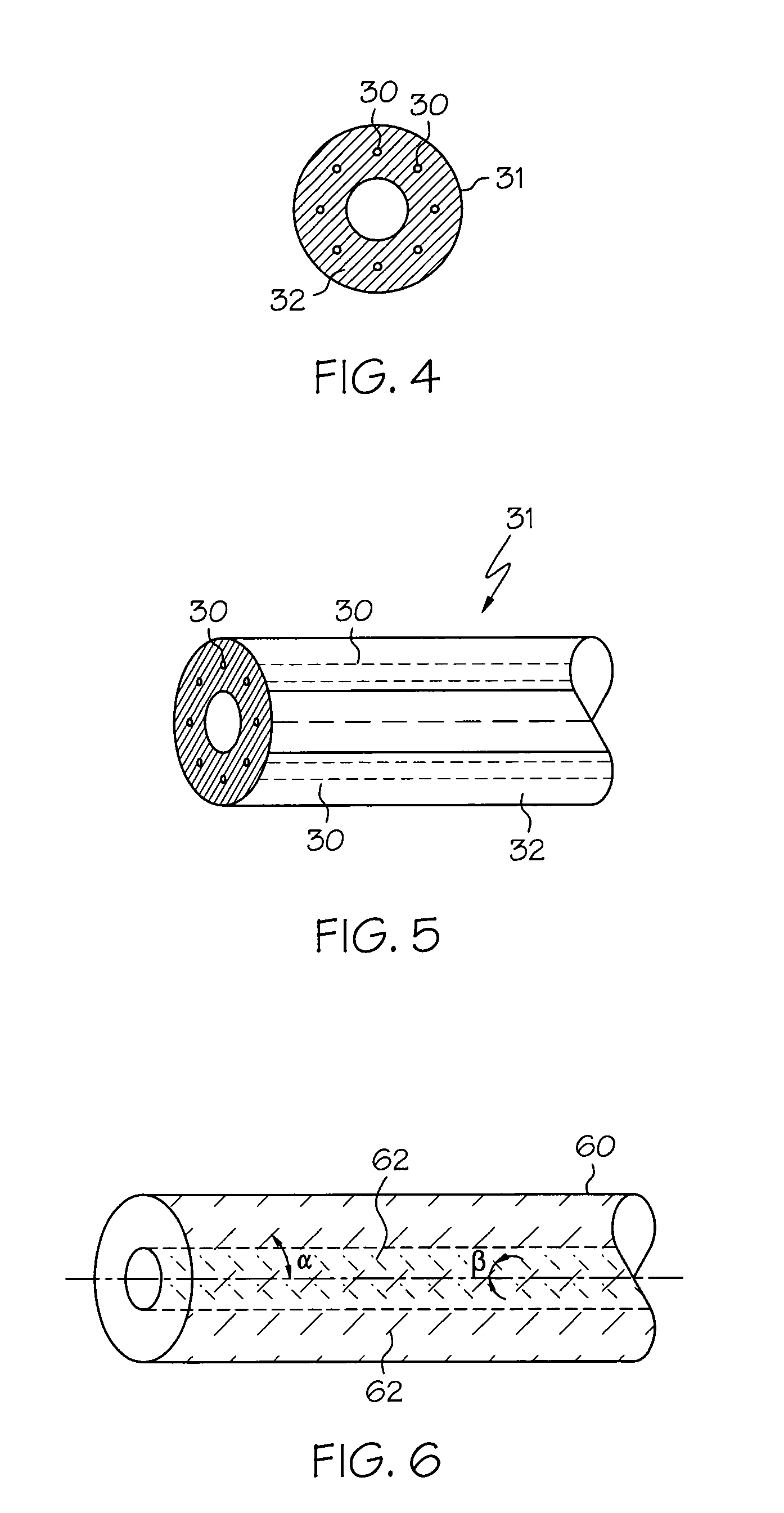Dimensionally stable balloons
- Summary
- Abstract
- Description
- Claims
- Application Information
AI Technical Summary
Benefits of technology
Problems solved by technology
Method used
Image
Examples
example 1
[0047]A matrix component of PEBAX® 7033 was mixed with a fibril component of LCP VECTRA LKX 1107 at the ratio of 95% to 5% respectively by weight. The mixture was extruded at a rate of 110 feet / minute line speed into tubing of 0.039 (outer diameter)×0.027 (inner diameter) inch. A 3.5 mm balloon was formed from the resulting tubing by radial expansion at 110 degrees Celsius with blowing pressure of 350 psi. The balloon with double wall thickness of 0.0014 inch was inflated from 4 atm to 13 atm at 1 atm increment and no measurable balloon length change was observed.
example 2
[0048]Coextruded 13 layer parisons 0.019×0.034 inches were prepared with alternating A & B layers, the A-layers being PEBAX® 7233, the B-layers being PEBAX® 7233 blended with 15% by weight VECTRA® LKX 1111. The parisons were extruded 30 at 221° C. Balloons of 3.0 mm diameter, 0.00155 inches double wall thickness, were blown. The ETO sterilized balloons had the following characteristics:[0049]Hinged compliance:[0050]ave. growth rate, 3–9 atm—0.045 mm / atm[0051]ave. growth rate, 12–18 atm—0.020 mm / atm
[0052]Diameter change at nominal pressure after balloon inflated to 18 atm—5.3%
[0053]Burst pressure—26–27 atm
[0054]Burst Strength—23201 psi
[0055]Longitudinal growth 12 atm to 18 atm—5.9%
example 3
[0056]Two extruders are utilized to extrude a plurality of stripes 113 over a metal core. The parison 110 is rotated in one direction with the core at 2000 rpm to produce the helically oriented tubing, such as may be seen in FIGS. 9–12. The core fibers 113 may be MXD6 aromatic nylon from Mitsubishi Gas Chemical. The tubing material, such as layers 112, 114 and 116 may be one or more base polymer materials such as PEBAX® 7233. The stripes 113 are evenly distributed along the circumference of the tubing and located at the middle of the tubing wall.
[0057]In the present example, a 3.0 mm balloon was formed from a tube having an internal diameter of 0.021 inches and an outer diameter of 0.037 inches at 95° C. and at 400 psi pressure. The balloon burst at 311 psi with double wall thickness of 0.00145 inch. The balloon length change was 2.3 percent from 6 atm to 12 atm, and 3.2 percent from 12 to 18 atm.
[0058]For comparison purposes in regard to Example 3, tubing of 100 percent PEBAX® 7233...
PUM
| Property | Measurement | Unit |
|---|---|---|
| Fraction | aaaaa | aaaaa |
| Percent by mass | aaaaa | aaaaa |
| Diameter | aaaaa | aaaaa |
Abstract
Description
Claims
Application Information
 Login to View More
Login to View More - R&D
- Intellectual Property
- Life Sciences
- Materials
- Tech Scout
- Unparalleled Data Quality
- Higher Quality Content
- 60% Fewer Hallucinations
Browse by: Latest US Patents, China's latest patents, Technical Efficacy Thesaurus, Application Domain, Technology Topic, Popular Technical Reports.
© 2025 PatSnap. All rights reserved.Legal|Privacy policy|Modern Slavery Act Transparency Statement|Sitemap|About US| Contact US: help@patsnap.com



